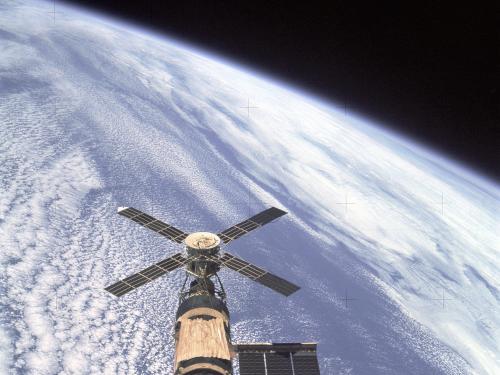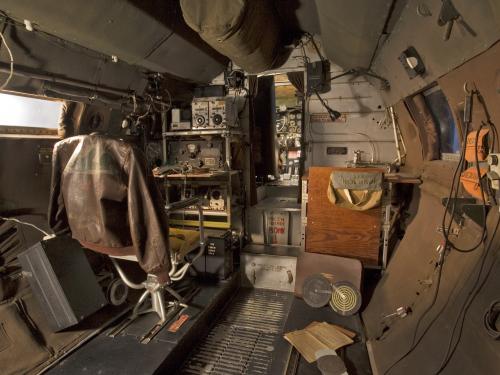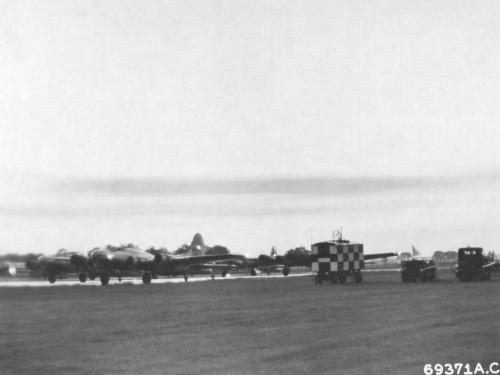
Stories of daring, stories of technological feats, stories of prevailing against the odds ... these are the stories we tell at the National Air and Space Museum. Dive in to the stories below to discover, learn, and be inspired.
Showing 1391 - 1400 of 1761

July 14, 2014
Passed over S.F. Bay Bridge, along Embarcadero, Marina, Presidio, etc. Just after passing over Golden Gate Bridge encountered low cumulus clouds on the coast. “On top” from there on over “snowy desert.” Later clear & broken—smooth air. Early morning, “detoured” to south to avoid several storm areas. Arrived Honolulu (Pearl City) after passing over “Diamond Head” & Waikiki Beach. Very elaborate “Hawaiian welcome.”

July 11, 2014
Thirty-five years ago, on July 11, 1979, the first US space station fell out of orbit. It wasn’t a surprise or an error, nor was it a calamity. It was more like an intense meteor shower—sparkling and momentary—as Skylab entered the atmosphere. Very little of this spacecraft as large as a house was ever found on the ground.

July 03, 2014
Every Fourth of July, visitors and locals alike crowd the National Mall to watch the fireworks show with the Washington Monument as one of its focal points. The monument reopened to the public in May 2014 as the last vestiges of scaffolding were removed from it, a visible reminder of the damage caused by a 2011 earthquake. Every year, thousands of visitors photograph themselves on the National Mall with the monument in the background. It is no surprise that it is popular in aviation photography as well.

July 02, 2014
Fred Ordway passed away in Huntsville, Alabama, on the morning of Tuesday July 1.

June 25, 2014
Able and a squirrel monkey named Baker were the first American animals to enter space and return safely. On May 28, 1959 at Cape Canaveral, Able was placed in the nose cone of Jupiter AM-18 secured by a contour cradle made of fiberglass with sponge rubber lining specifically built for her body. Included in the cradle were multiple electrodes used to collect information on Able’s reaction to noise, acceleration, deceleration, vibration, rotation, and weightlessness. The cradle was then placed in a capsule with a life support system that included oxygen, moisture and CO2 absorbers, and electrical heating and cooling systems to keep the monkey alive. Baker was placed her in own separate capsule in the nose cone.

June 19, 2014
The Museum’s Martin B-26B-25-MA Marauder Flak-Bait and its crews survived 207 operational missions over Europe, more than any other American aircraft during World War II. Recognizing that significance, the U.S. Army Air Forces saved it from destruction after the war.

June 13, 2014
In 1944: Germany launched the world’s first operational cruise missile at England one week after D-Day. The British nicknamed the V-1“buzz bomb” or “doodlebug.”

June 07, 2014
What was it like to witness a Space Shuttle launch or landing? For the Moving Beyond Earth (MBE) exhibition about the Space Shuttle, the International Space Station, and future human spaceflight, the team wanted to show how shuttle launches and landings became cultural experiences, not just technological events. Thousands of people gathered, often after having traveled great distances to do so. Many took pictures to record their presence at these historic events. What story would those snapshots tell?

June 06, 2014
It's hard to spot the familiar US insignia of the white star on a blue circle, but the black and white stripes the Lightnings wear stand out easily - which is a very good thing. In 1944, in the months leading up to the invasion of Nazi occupied France, the Allied planners of Operation OVERLORD realized that on the day of the invasion - D-Day - the skies over the invasion zone would be filled with aircraft.

June 05, 2014
When we think of D-Day, we tend to envision the waves of landing craft approaching the beaches and Landing Craft Tanks (LCTs) with barrage balloons in tow, or maybe waves of C-47s winging away from their bases in Southern England with their paratroopers. These are powerful visuals and while the soldiers and paratroopers really did do the heavy lifting of liberating France, these images overshadow a remarkable and invisible war that is often forgotten.